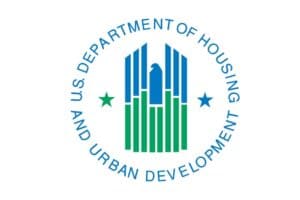News

Early Reflections on the 2016 Election
It will take some time to fully digest the results from last night’s election but I wanted to share some initial thoughts on what this may mean for our industry. Whether you are a Republican or Democrat we must collectively figure out a way to come back from the divisive politics that characterized this election. […]

HUD Releases FY 2016 RAD Data: 201 Properties Completed
2016 has been the most productive year in the program’s short history.

HUD Amends LIHPRHA Statute Allowing for Unlimited Surplus Cash Distribution
HUD’s Office of Multifamily has recently published the amended and restated use agreement for projects subject to the Low-Income Housing Preservation and Resident Homeownership Act of 1990 (LIHPRHA).

Long-Time Boston Affordable Housing Leaders Recognized by National Housing & Rehabilitation Association
The National Housing & Rehabilitation Association (NH&RA) presented two recipients with this year’s Affordable Housing Vision Awards. The awardees are Maurice Barry, Chief of the Asset Resolution Branch in the US Department of Housing & Urban Development (HUD) Multifamily Boston Satellite Office and Fred Copeman, Esq., Principal and National Director of Tax Credit Investment Services at CohnReznick LLP. Barry and Copeman were honored at an awards reception at the NH&RA Fall Developers Forum on November 1st at the Langham Hotel in Boston.

CDFI Fund Releases Draft 2016 Allocation Agreement Closing Document
NH&RA’s New Markets Tax Credit Council will be hosting a call in the near future to discuss these changes and looks forward to your contributions towards a comment letter. Read on for a summary of changes.

HUD Solicits Comment on Draft of Multifamily Asset Management and Project Servicing
Multifamily Housing has released five draft chapters of Multifamily Asset Management and Project Servicing – HUD Handbook 4350.1.

NLIHC Releases Publication on Housing Choice Vouchers and Public Housing Waitlists
Yesterday, the National Low Income Housing Coalition (NLIHC) released Housing Spotlight: A Long Wait for a Home — a report that analyzes the current state of Housing Choice Vouchers (HCV) and public housing waiting lists across the country.

RAD Collaborative Announces Sign-On Letter for RAD in FY 2017 Budget
The FY 2017 appropriations bill in the Senate includes measures to raise the RAD cap to 250,000 units, remove the 2018 sunset of the program, and extend RAD eligibility to Sec. 202. The House bill is without these measures.

HUD: New Energy Benchmarking Requirements for Section 8, Multifamily FHA Insured and PRAC Properties
HUD’s Office of Multifamily Housing published on Tuesday a notice in the Federal Register creating a 60-day period for public comment for new proposed regulations that would require HUD-Assistance and FHA Insured Multifamily Properties to benchmark and report to HUD energy and water utilities.

GAO on Elderly Housing: HUD Needs to Improve Link to Resident Services
Among other things, GAO found that HUD lacks written policies regarding how service coordinators should be monitored in fulfilling Section 202 requirements.

HUD Releases Utility Schedule Model: Calculating Utility Allowances for HOME Webcast
The webcast, available online, demonstrates how to use the HUD Utility Schedule Model to calculate utility allowances for HOME-assisted rental projects.

HUD Sets Operating Cost Adjustment Factors for 2017
The 2017 OCAFs range from no change (Hawaii) to an increase of 2.4 percent (North Dakota). The posted U.S. average is 1.9%.